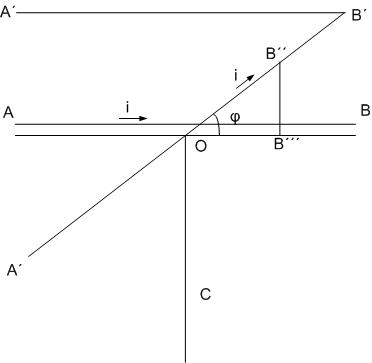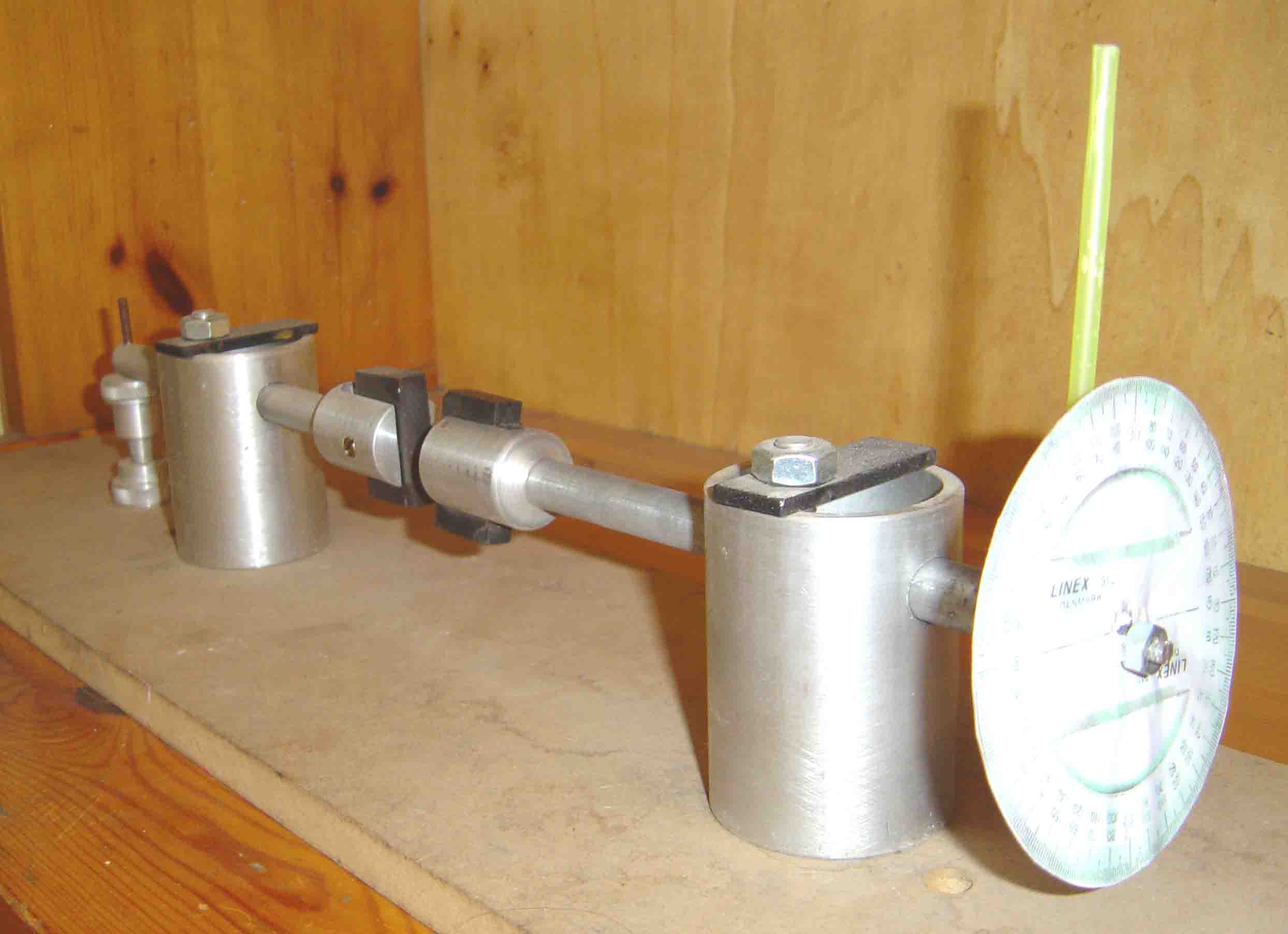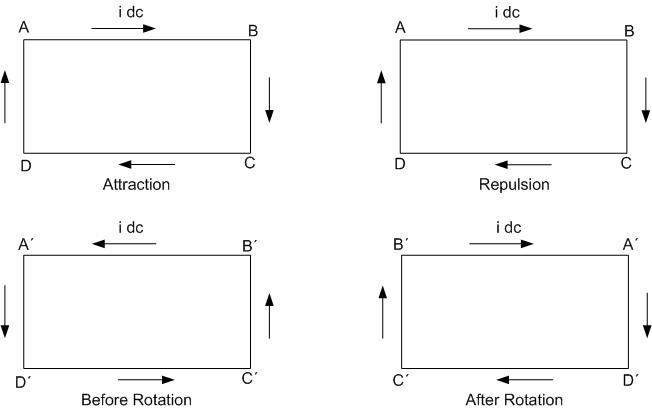

CURRENT T TO CURRENT INTERACTIONS


| Photograph of a realistic model, made by the famous
engineer Theodore Tsirigakis, after my instructions. Instead of currents, we have used
permanent magnets, because their sides are equivalent to steady DC
currents. See also photograph at end of page. NOTE The north south axis of both magnets are parallel and vertical, not facing each other! |
SUMMARY OF MATHEMATICAL THINKING AND KEY CONSIDERATION
Work bringing OB to OB' is much less than parallel transport of this line to B'
The two back and forth translation works are equal to the total
translational work. The rotational work from 0 to 90 degrees is equal to
the rotational work from 90 to180 degrees.
The AB parallel sections PRODUCE THE SAME WORK, the perpendicular sections from
- work (helping) become + work (opposing) and cancel out. Therefore
translational work in the two ways > than rotational work. ALWAYS REMEMBER
ROTATIONAL WORK OF OB TO OB' IS LESS THAN PARALLEL TRANSPORT OF OB or less than
the parallel section to position A'B'.
Consider two electrical currents as shown above in a T configuration. The two currents interact, as we say, magnetically. Initially the two currents are both parallel to AB and on the same plane. The lower current moves so that stays always parallel to the upper current which is stationary. Both currents are DC and constant currents
. As the lower current is
similar to the first it is attracted and approaches the upper current along OC,
receiving a force from the upper current and producing a + work. When the
current reaches the end position AB, , rotates
180 degrees, by an external work, so that it reverses. Then the lower current is repelled as an ant
parallel current and produces again + work until it goes too far that there are no
forces and reverses there by rotating 180 degrees, needing no rotational work
there.
Here we shall compare the two +
works with the external work of rotation at the close position and we shall find the two + works which,
by the way are equal to
each other, are bigger than the external work of rotation, so that repeating the circle of
movements, we shall have a net work produced every time. Thus, free energy is
produced as much as we want with the total free energy gained, going to infinity!
Let us assume that the moving current has reached the upper position next to the stationary section and has been starting rotating and it is in the position OB' having rotated the angle φ, as shown in the above diagram. We shall analyze its current i to one current ix, parallel to AB and one iy, perpendicular to AB. The perpendicular component does not interact with the stationary current. It remains only the parallel component that will produce work, which is ix = i.cos(φ). The force on it is
dF = i.dscos(φ).ids'/(B''B''')2 < ids.
ids'/(B''B''')2
for on the right hand side we have omitted cos(φ)<1. The
work of this component
is smaller than the component i on the moving parallel section which interacts with AB before the
rotation, for the movement of sections OA' and section OB' ARE ONLY LESS THAN HALF A
CORRESPONDING MOVEMENT AT THE SAME PARALLEL DISTANCE BB' OF THE MOVING PARALLEL
SECTION, that is to A'B' position. Therefore. all the WORK during the rotation
is SMALLER than the
transport OF THE TRANSPORTING forces. Therefore, the rotational work is smaller than the transportation
work. Therefore, if we make a closed path with the far end remotely
enough where the
interacting forces are negligible, we counter rotate the lower moving part, so
that it is slowly attracted again and it returns back to the stationary section, then we shall have a
closed cycle gaining free energy. You might consider the fact that there are no isolated
current sections, but only closed ones. Always you might consider the moving current
to be completed by
a rectangle, having two vertical sides with opposite currents which give no
total
interaction, and one remote returning current which will provide a smaller and
opposite interaction than the main parallel one. For this side the main
arguments apply as to the main close parallel side.
One can make similar considerations for the stationary current without an
essential change in the logical arguments
Q.E.D.
PTP
with the power of logic and mathematical thinking.
NOTE 1: What an easy job would be to use always the wrong dogma of conservation of energy, and say wrongly the two gained back and forth works are equal with the rotational work and allegedly there is no creation of energy, instead of troubling yourself like STEFAN MARINOV AND LEON DRAGONE, that both were caused to pass away for their determination of creation of energy.
NOTE 2: An axiom in a model should be independent of any other facts in the model. The case of the axiom of conservation of Energy is not so. As we have seen in many other cases, we may prove or disprove conservation of Energy, using completely independent principles. So the principle or the axiom of conservation of Energy, not normally so, is not an independent principle or axiom in an axiomatic model, wrongly so..

Experimental device for comparing rotational and translational work
The same picture but with both magnets rotated 90 degrees. Note again the two
axis north to south are parallel (attracting sides with parallel currents) or
ant parallel (repelling sides with opposite and ant parallel currents)
MAGNETS, SET SIDE BY SIDE, STILL ATTRACT OR REPELL IN ACCORDANCE TO
THE EQUIVALENT CURRENTS ON EACH OF THEM AND IN ACCORDANCE TO THE AMPERE FORCE
LAW,
The of two magnets, placed side by side, not North to South, or North to North or South to South. Note
